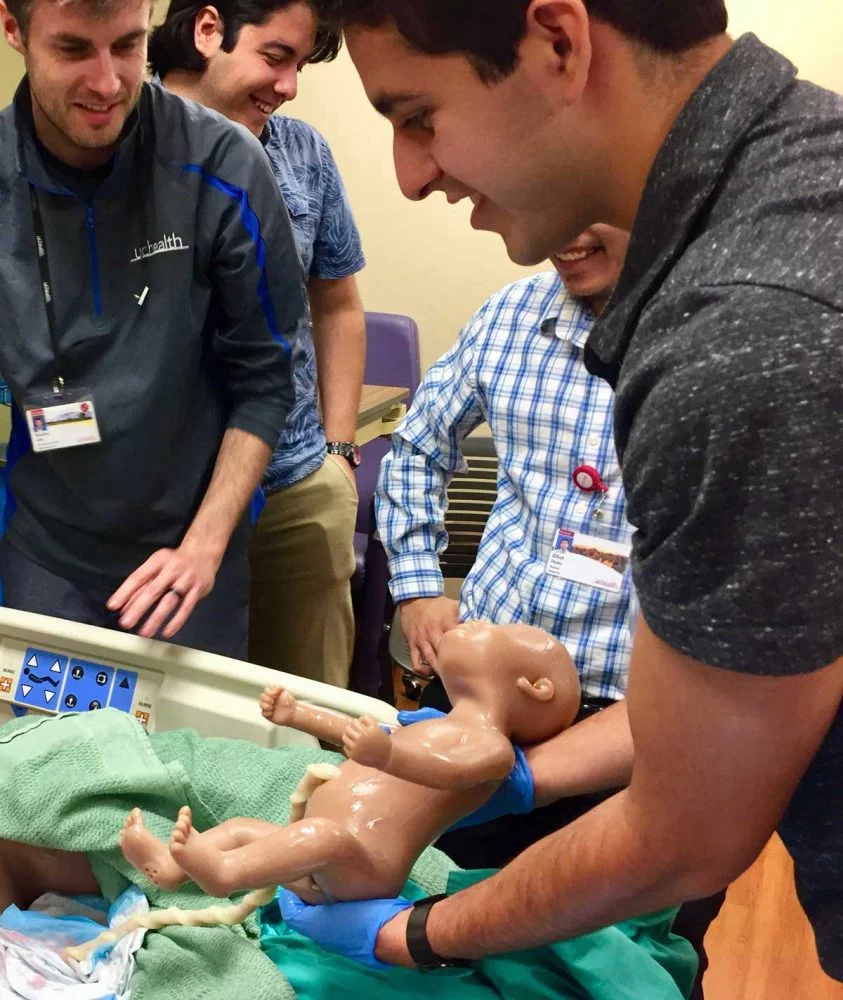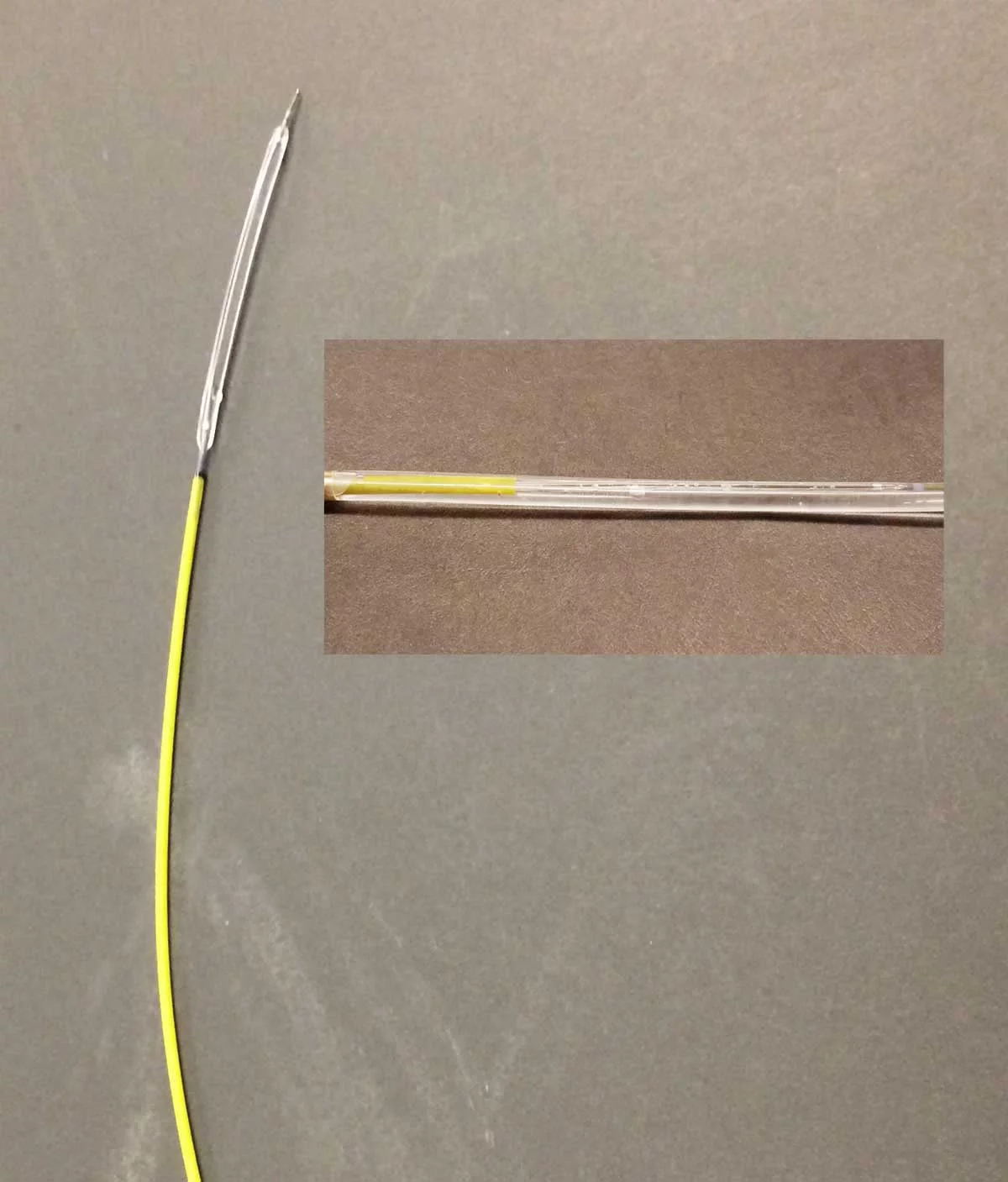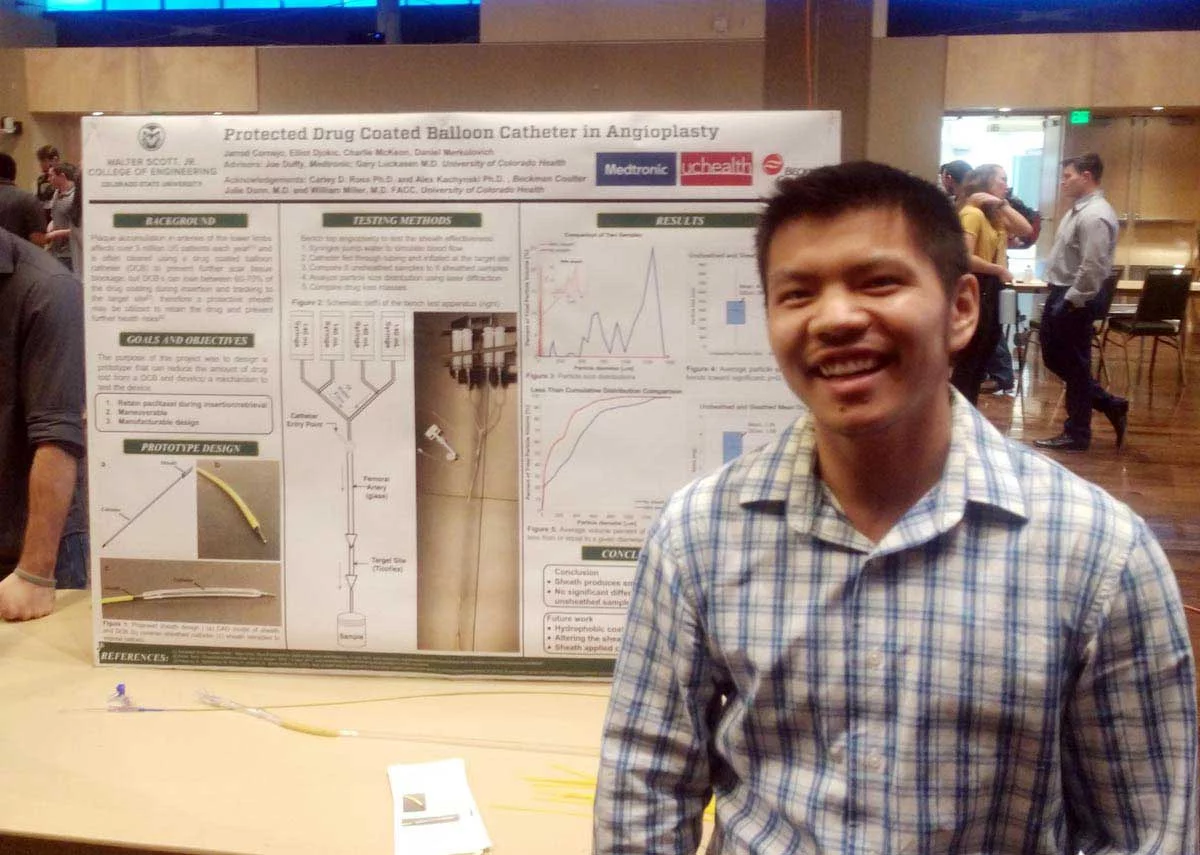Colorado State University student Elliot Djokic watched intently as UCHealth cardiovascular surgeon Dr. Mark Guadagnoli performed open heart surgery, not because he plans to be a cardiologist.

Djokic was part of the first cohort of students in the CSU Biomedical Engineering Clinical Immersion Summer Program.
CSU biomedical engineering works to solve problems by advancing technology in the realm of medicine. And Djokic had some questions for the veteran heart surgeon: How does the technology work? How could it work better? And what else would be beneficial
“He is a great teacher; very calm and very interactive,” Djokic said.
Making connections meaningful
Djokic’s interaction with the real-life side of medicine is new to the almost 10-year-old CSU biomedical engineering program.
“What happens often in our world is that an engineer shows up to the clinical side and says, ‘Look what I’ve done; look what I’ve designed; I feel your pain.’ But really, they don’t,” said UCHealth trauma surgeon Dr. Julie Dunn. “They don’t see those restraints on the clinical side, and we don’t see the restraints on the engineering side.”

Dunn approached CSU research scientist and instructor Ellen Brennan-Pierce about creating a program that would immerse engineering students into a clinical environment.
They were awarded a five-year grant from the National Institutes of Health to help bridge the gap between the study of biomedical engineering and its use in the real world. In June, the second cohort of students will participate in the seven-week program.
“It was very clear that the two disciplines needed to interact in order to get healthy discoveries to move science forward,” Dunn said.
First summer cohort

Djokic was one of the seven students to participate in the first year of the 40-hour-per-week summer immersion program.
“It really gave us from the engineering program a look at what it is like in the operating room, in the patient rooms, in recovery, and how people interact with the equipment that we design,” Djokic said.
Students have weekly rotations at UCHealth Medical Center of the Rockies, observing and questioning how technology is used in anesthesia, trauma and orthopedic surgery and radiology. They watch cardiovascular procedures, talk with neurosurgeons and spend time in intensive care units.
“CSU engineering students don’t typically have a way to interact with clinicians a lot,” Brennan-Pierce said. “It’s good for them to see those medical devices used, interact and see the constraints of the clinical environment. Those are the things we can’t help them understand in the classroom.”
Learning from those in the field
“I have a massive appreciation for the technology that we have,” Djokic said. “If you think about just 20 years ago, we had just half the stuff that they use every day now. It was very impressive.

“But I was also very surprised at a few things. There are areas in the medical field where we do things but don’t understand what it is that we are doing that makes it work. That is mind-blowing.”
Eleven students are participating in this summer’s immersion program, which began in early June. And Brennan-Pierce said they’ve added Quorum Prosthetics, a Windsor-based company, to the rotation.
Solving real-world issues
The immersion program is a foundation for the students’ senior engineering design program — a required course. The program gives students new knowledge that they bring to senior design projects, which, in essence, should be marketable after they graduate.
Djokic’s cohort came up with more than 60 ideas, including the development of a protective sheath for drug-coated balloon used for angioplasty.
The senior project prototype

Angioplasty is the surgical repair or unclogging of a blood vessel, mainly a coronary artery. A drug-coated balloon is guided by way of a catheter inside an artery to the spot that needs repair, and the drug is administered in that area to limit blockage regrowth after treatment.
However, drug particles can fall off the balloon, causing problems downstream from the treated area. The CSU students designed a sheath for the drug-coated balloon that would allow cardiologists to release the drug only at the intended site.
“The protective sheath can be pulled back or forward to cover the balloon depending on where it is in its path,” Djokic said.
The sheath could eliminate rogue drug particles and have additional benefits, according to Gary Luckasen, a UCHealth cardiologist and adviser in Djokic’s senior design class.
“The designed catheter would minimize loss of material from the balloon when it’s put in,” he said. “And that means higher concentration of the drug delivered to the intended site.”

Luckasen said he spent several sessions with the students helping them understand how the catheter would function. He suggested improvements to the design as well as how to measure effectiveness. The project is still in its validation stage, as students didn’t have the proper equipment to test it fully, Brennan-Pierce said.
CSU biomedical engineering enhanced
“This is an excellent program,” Luckasen said. “Many students don’t understand the variability that we can encounter in different people, from size to the disease. This immersion program allows them to see how things are used, how they move in the body, the risks and problems we encounter. They can observe what’s happening with the present designs, and it gives them a much better idea of reality as opposed to trying to create something without any access to a human body to see what it does. This makes their devices much more realistic.”
